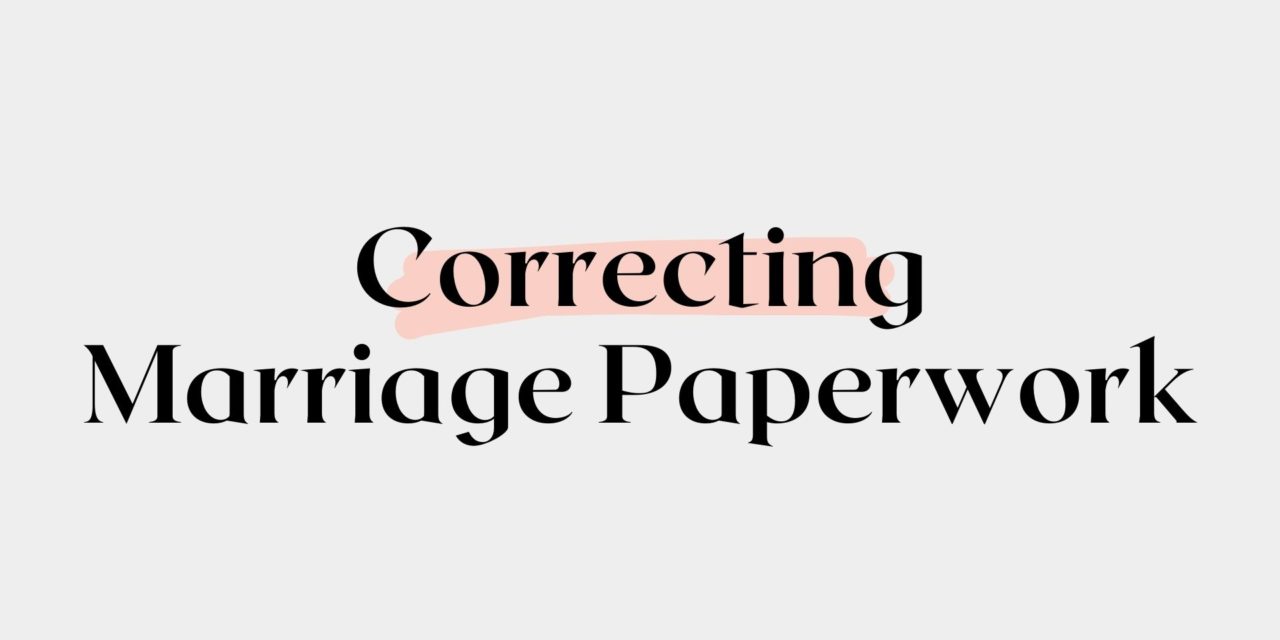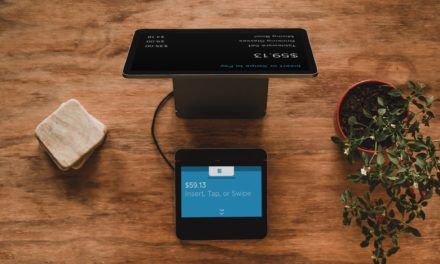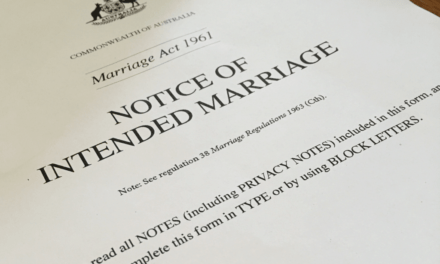There’s a new fact sheet on the Attorny-General’s department website on correcting marriage paperwork, and it’s an important read. Luckily for us, our own Sarah Aird heavily impacted the final draft. We’re copying and pasting the fact sheet here, but find the original on the AGD website.
This fact sheet is designed to assist celebrants when a need arises to amend information or correct errors made on marriage certificates and other marriage documentation. The fact sheet covers scenarios both before and after the marriage is solemnised.
Correcting documentation before the marriage
Notice of Intended Marriage (NOIM)
The Marriage Act 1961 (the Act) provides for celebrants to permit an error on the NOIM to be corrected in their presence by either of the parties to the marriage at any time before the marriage has been solemnised (subsection 42(9) of the Act).
An error on the NOIM includes a spelling error.
A change to the address or occupation of one of the parties to the marriage after the date that the NOIM was given to the celebrant does not constitute an error and the address and occupation should remain the same.
If a party to a marriage changes their name after the NOIM has been given to the celebrant, the NOIM can be amended after the change of name certificate is obtained, but only prior to the marriage.
The alteration should be initialled by the party correcting the change and by the celebrant.
Marriage certificates (Official Certificate of Marriage (celebrant copy) and Official Certificate of Marriage on the back of the Declaration of No Legal Impediment to Marriage to be forwarded to BDM (BDM copy) and Form 15 Certificate of Marriage given to the couple)
If the error is discovered after the certificates have been prepared and before the ceremony takes place, the NOIM must first be corrected.
Errors appearing on the Official Certificates of Marriage can be corrected prior to the marriage taking place by either completing the form again or altering the existing form. Alterations should be initialled by the party correcting the error and by the celebrant.
Alterations should not be made on the Form 15 Certificate of Marriage; a new certificate should be prepared incorporating the correct particulars.
If it is necessary for the Form 15 Certificate of Marriage to be destroyed, as a result of errors, a record must be kept of the destruction, stating the date of, and the reason for, the destruction (subparagraph 73(5)(d) of the Marriage Regulations 2017). The destruction of this certificate can only occur before the marriage is solemnised, as the Form 15 Certificate of Marriage must be handed to the couple immediately after the ceremony.
For more information on marriage celebrant record keeping obligations, see the record keeping section below.
Correcting documentation after marriage
Notice of Intended Marriage (NOIM)
If an error is discovered on the NOIM after a marriage has been solemnised, the error must not be altered or corrected on the NOIM. The celebrant may wish to send a covering note explaining the error to the BDM when registering the marriage.
If a party to the marriage changes their address or occupation after the NOIM has been given to celebrant, the new address should be reflected on the Declaration of No legal impediment and Official Certificates of Marriage.
Marriage certificates
Where the error(s) is not discovered until after the ceremony, corrections may be made if the parties and witnesses are still present. The changes must be initialled by the celebrant and a covering note should be sent to the BDM. Where the marriage is to be registered online (available in some but not all States and Territories) ensure you have corrected the information in the online notification.
Mistakes on the Form 15 Certificate of Marriage and Official Certificates of Marriage cannot be corrected by the celebrant if the error is identified after the ceremony has concluded and the parties and witnesses are no longer available. Once the marriage has been registered, such corrections can only be made by the authorised officer of the relevant registry of births, deaths and marriages (subparagraph 51(1)(a) of the Act).
In accordance with section 51 of the Act, the authorised officer can make corrections to any certificate prepared and signed under section 50 of the Act, being:
- the Form 15 Certificate of Marriage certificate (s51(1)(a))
- the Official Certificate of Marriage (celebrant copy) (s51(1)(a)), or
- the Official Certificate of Marriage (BDM copy) (s51(1)(b)).
The provisions of section 51 are narrow, and only apply to any corrections required after the marriage has been solemnised. You may need to provide additional information such as a statutory declaration to assist the authorised officer at the BDM.
There are ‘corrections’ powers in each of the relevant State/Territory Acts, which allow State/Territory registering authorities to correct entries on the Register of Births, Deaths and Marriages for that State/Territory. Contact should be made with the relevant BDM registry for an application to correct an entry. Celebrants should never make corrections to the Official Certificate of Marriage (celebrant copy).
Subsection 50(7) of the Act states the regulations may make provision for and in relation to the furnishing of a substitute certificate in the event of the loss or destruction of the official certificate of marriage. This is provided in subsection 78(2) of the Marriage Regulations, however relates to the Official Certificate of Marriage (BDM copy), not the Form 15 Certificate of Marriage.
Under no circumstances can the Form 15 Certificate of Marriage be intentionally destroyed or reissued after it has been provided to the couple.
Record keeping obligations for Form 15 Certificate of marriage
Marriage celebrants must keep a record for the Form 15 certificate – the Record of Use form. The information must be kept for a period of six years from the last entry.
The Marriage Regulations do not prescribe the record of use form that must be used, only the details that must be recorded. Celebrants must record the following details on the record-keeping form:
- any serial number printed on the Form 15 document by the supplier
- if used by the person—the date of, and full names of the parties to, the marriage
- if transferred to another authorised celebrant—the date of the transfer and the full name and authorisation number of the other authorised celebrant
- if destroyed—the date of and reason for the destruction, and
- if any other event occurs in relation to the document—the date and other relevant details of the event.
A celebrant may record this information on a spreadsheet or word document. Alternatively, they can scan a completed Record of Use form to keep the records electronically.
A celebrant must also retain the Official Certificate of Marriage (celebrant copy) for a period of six years from the date the marriage is solemnised.





